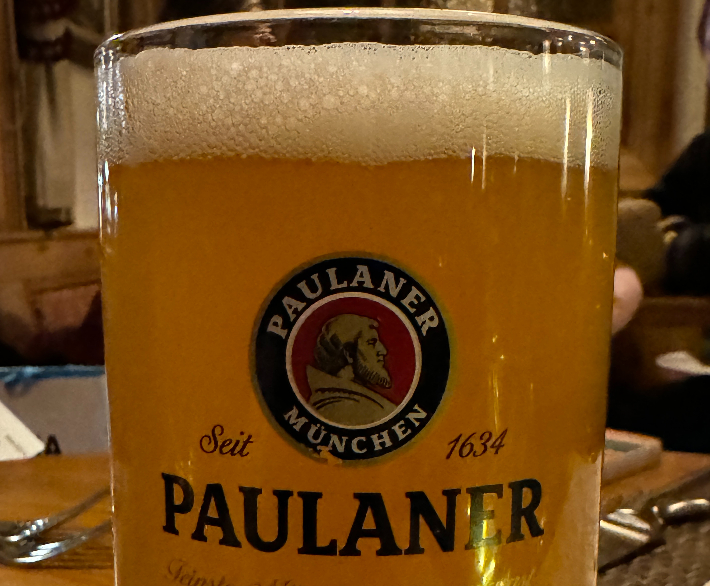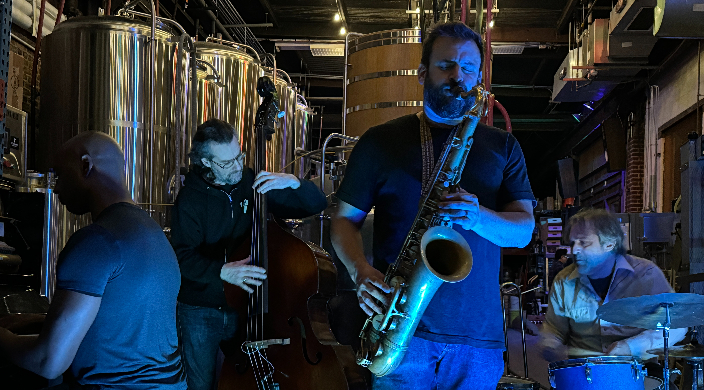
This graph from a presentation at the recent American Hop Convention confirms that a small brewery closes almost every day somewhere in the United States. Last week, Black Narrows Brewing in Virginia used Facebook to announce it will be one of them, next Sunday will be its last day in business.
Alistair Reece writes that this is a loss for Virginia, and also points to a story he wrote for Pellicle.
It feels like it is a loss for all of us. I have had a couple of brief conversations with Black Narrows founder Josh Chapman and longer exchanges via email. Brewing beer that reflected the place it comes from seemed to come naturally to him. Black Narrows was on a short list of breweries I hope to visit, perhaps the coming summer, so I am selfishly sad. The possible good news is a hint from D.C. Beer that “Chapman probably isn’t done brewing on the Delmarva peninsula. Stay tuned . . .”
You might also enjoy
First, two headlines. “Fight the Power — How Craft Malt Is Central to Taking On Beer’s Industrial Complex” and “This beer is so popular that brewers are sick of it” read like click bait.
The second is behind a paywall. I get the impression it goes back to a list of overrated beer styles, which was really a list of styles industry members apparently don’t like. I am reminded of the quote usually credited to Yogi Berra although he was not the first to say it: “Nobody goes there anymore. It’s too crowded.”
When Alan McLeod linked to the first, he added a footnote that, “The whole idea of craft beer is taking on industrial beer like it’s, you know, 2011 or so, is sweet and nostalgic and charming and all.” I signaled my agreement at Bluesky, leading him to add that we should remember that authors don’t write headlines.
I wrote what I had to about craft malting last June. Actually, I let Jeff Bloem at Murphy & Rude Malting Co., who provided malt to Black Narrows, lay the foundation. At the time I asked if craft maltsters are agents of change, without adding my opinion. I think they are, just as brewers like Josh Chapman are. But they aren’t taking down beer’s industrial complex any time soon.
A Creative Boom Led to Many IPA Busts
This was a subhead within a story in which Josh Bernstein confesses his book, “Complete IPA,” serves as “a half-finished time capsule filled with bright ideas gone dark.” I do not miss brut IPA, a “style” so short lived that it did not earn a capital B. I started to type “I do miss bracingly bitter,” but a) I admit there is a difference between bracing and abrasive, and b) to complain when I have no problem finding Russian River Blind Pig, Comrade Superpower and whatever Cannonball Creek is pouring with IPA in the name would be obnoxious.
How much beer did a 19th century farmer-brewer brew?
That’s not the only question Martyn Cornell has. “Given those figures, it is not surprising to find that a fair number of farmers who brewed for themselves and their workers did indeed cross over into commercial brewing,” he writes before posing his question. “What the figures are nationally for farmers becoming commercial brewers I don’t know . . . anyone want to do the research?”
Rogue’s slow, deliberate reinvention
Jeff Alworth points out that Rogue has a flagship beer that is older (at 32 years) than many of the drinkers it hopes to attract. In its early days, the personality of the brand reflected those of founder Jack Joyce and brewmaster John Maier. Now Rogue has a “tighter focus and more conventional approach to beer” and has “started making more accomplished, modern beer, including IPAs, which they had strangely never seriously pursued.” Strange indeed.
#YearOfTheLager
“No style trend in recent memory has unified the highly segmented US beer fan more (than Czech Lager),” Doug Veliky writes. Noteworthy is the fact this post is sponsored by Czechvar (Budvar in Czechia, but not called that here because Budweiser won that court battle). #YearOfTheLager comes with a downloadable guide, an online seminar and more.
This piggybacks with promotions begun in the mid-teens by the Czech government. The Czech Embassy in Washington, D.C., and the Ministry of Agriculture have organized a “Brewing Like Czechs Do” project for several years, working in partnership with Czech hop growers. Last month, Alworth wrote, “I’ve always wondered why Americans knew so little about Czech beer.” That’s changing.
Cartoons on an IPA can? Dover NH teens say frothy beer labels need to sober up
“I don’t like being targeted by the industry. I don’t like seeing my peers ruin their brains and their livers at like 14 and 15 because they’re binge drinking. It’s just a problem.”
On the other hand . . . recall Flying Dog won went to court to keep states from banning sales of its beer Raging Bitch or from including the words “Good Beer, No Shit” on its labels.



